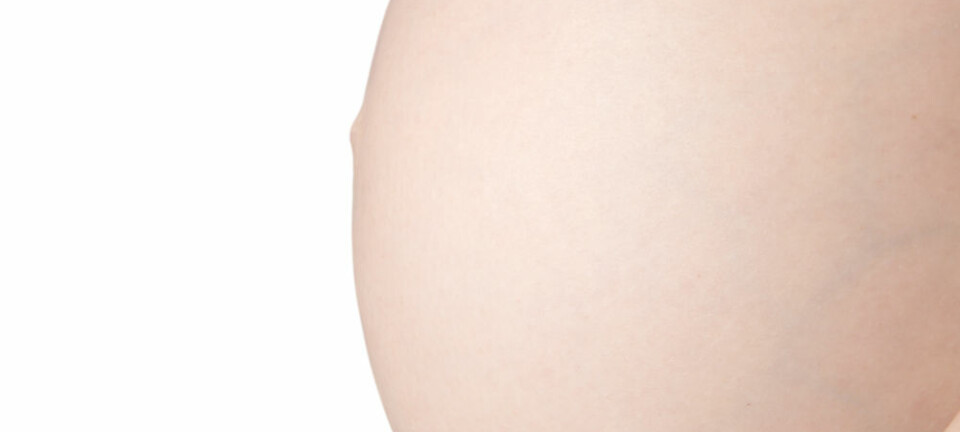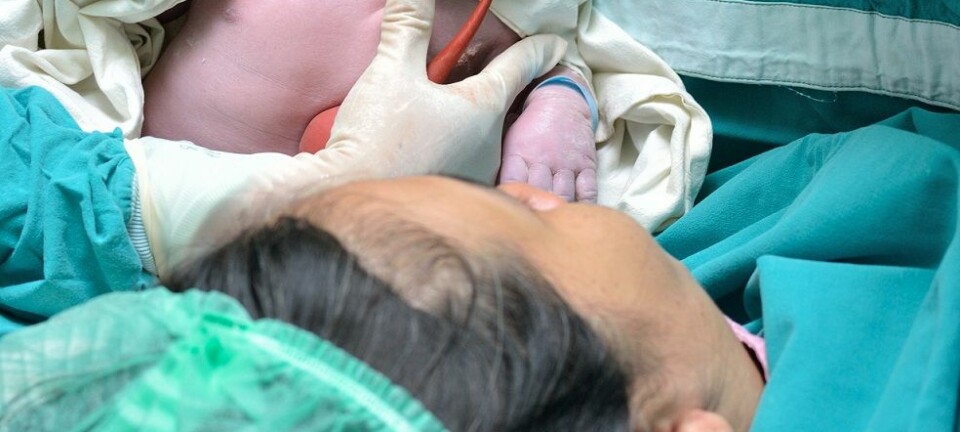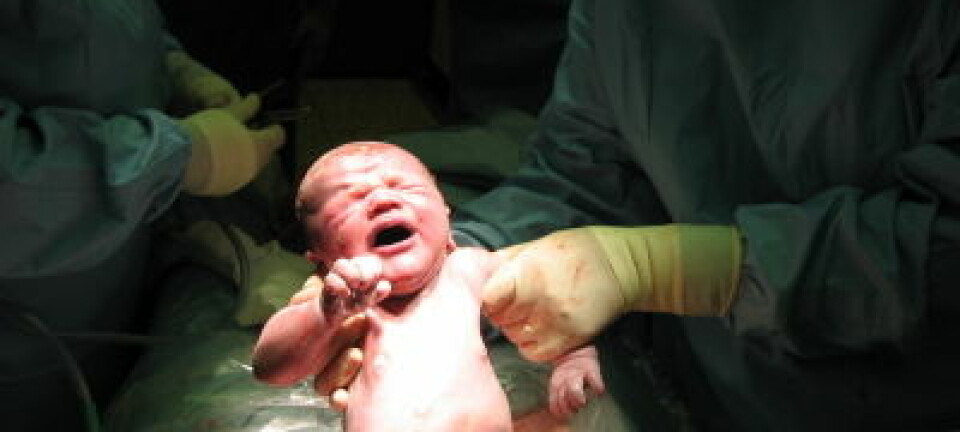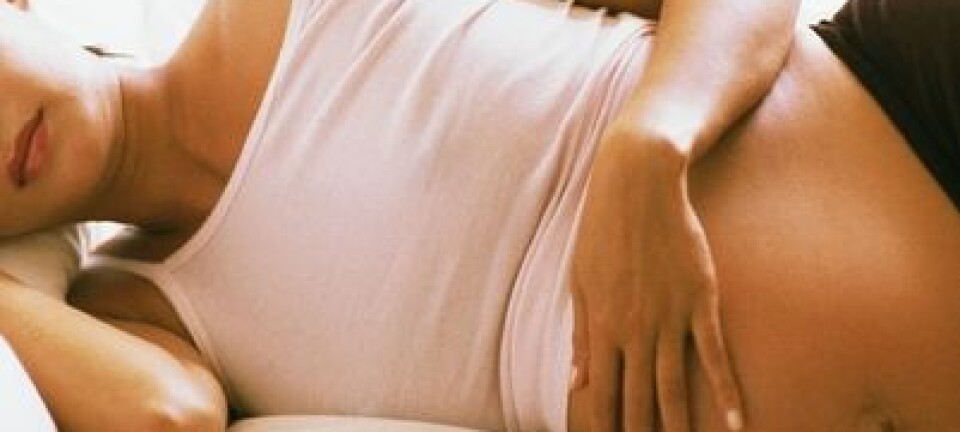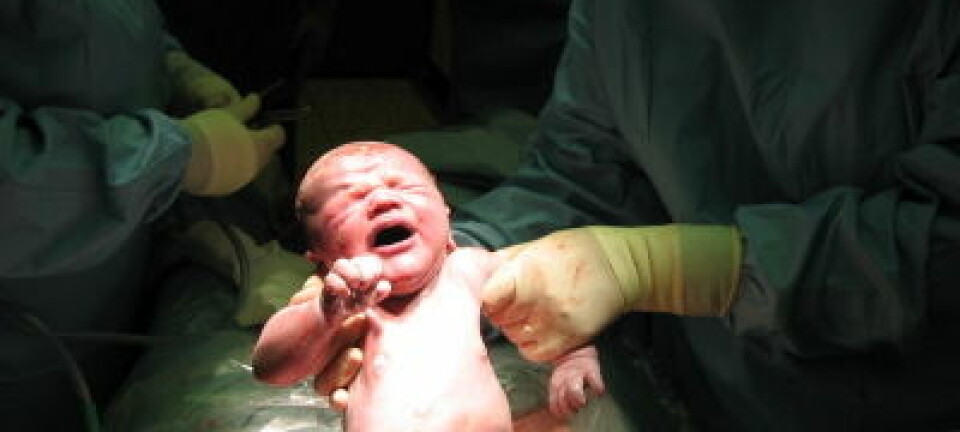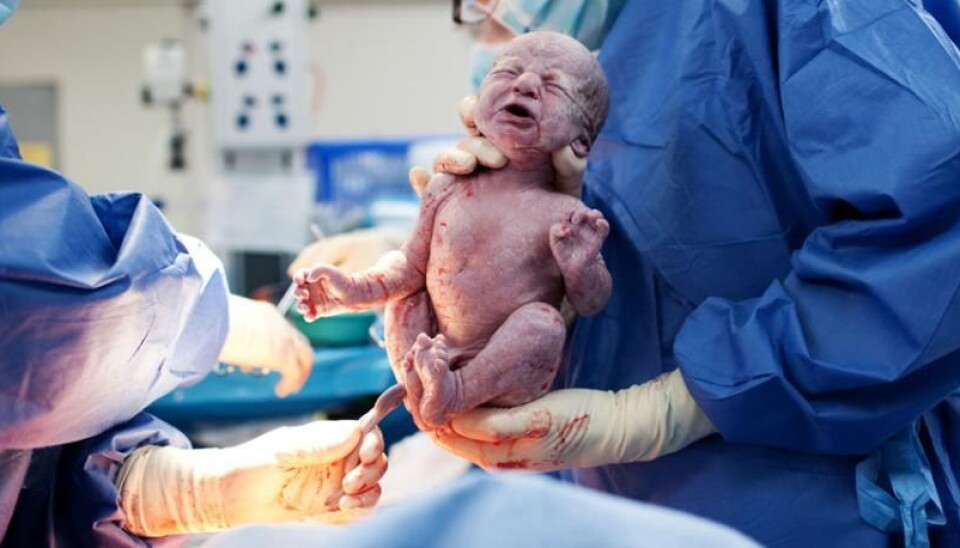
Older mums at increased risk of Caesarean births
Women in their 40s have three times the risk of having an emergency Caesarean section compared to women in their early 20s, a large Norwegian study shows.
Denne artikkelen er over ti år gammel og kan inneholde utdatert informasjon.
Women are waiting longer to have children. In 2012, almost every fifth woman giving birth in Norway was 35 or older, according to figures from the Norwegian Medical Birth Register.
A comprehensive Norwegian study has demonstrated that the risk of having an emergency Caesarean section increases drastically when a woman is 40 years or older, even among women considered to be low risk.
“Previous studies have shown this increased risk, but they have all been based on high-risk groups. This study shows that the risk also increases in women who are basically healthy,” says gynaecologist and researcher Lina Herstad.
The high-risk group includes women with diabetes, gestational diabetes and high blood pressure or preeclampsia, conditions that are known to lead to more emergency Caesarean sections.
In addition, previous studies have shown an increased risk of bleeding during the procedure. Children delivered by Caesarean sections are also more susceptible to a variety of conditions such as allergies, asthma, obesity and diabetes.
The new study is based on 169,500 Norwegian women in the low-risk group. It is part of Herstad’s doctoral work at the National Expertise Service for Women’s Health at Oslo University Hospital.
More than one in five
Emergency surgery was necessary for 22 per cent of low-risk pregnant women who were 40 years or older. This is three times more than in the control group.
For pregnant women between 20 and 24 years of age, the figure was 7 per cent. The primary reason for the surgery was labour lasting too long. The second most common reason was low or weak pulse in the foetus.
Of all births in Norway during the research period, almost 16 per cent ended in emergency Caesarean sections.
More use of forceps and vacuum
When giving birth vaginally, older women more frequently needed the help of a vacuum pump or forceps compared to their younger counterparts. These methods were used twice as often in older mothers as compared to the mums between 20 and 24 years old.
The use of epidural anaesthesia and oxytocin (a hormone that stimulates contractions), along with induction of labour, also increased when mothers were older.
Previous studies from other countries, including the UK, have shown an increased risk of emergency procedures during childbirth in older mothers. However, these studies have been based on subgroups of high-risk mothers.
Herstad says that most older mothers are healthy and have a low risk of complications.
Long gestation and large babies
It is unclear whether it is age itself or the need for interventions with medical complications (which are more common with age) that causes the increased incidence of Caesarean sections.
Herstad examined whether the use of an epidural, large babies, long pregnancies or initiation of labour as possible explanations.
She found that pregnancies that had lasted for 42 weeks or more were at doubled risk. Twenty per cent of these pregnancies led to emergency Caesarean sections, compared to 8 per cent of shorter pregnancies.
If the baby's birth weight was 4 kg or more, the mum's risk increased from 8 to 16 per cent.
“It appears that older mothers often have long pregnancies, but we do not know why. Currently we induce labour more frequently for older women,” says Herstad.
Induced labour tripled the risk of an emergency Caesarean section. The use of an epidural doubled the risk. Both are more common with older mothers.
Many normal births
Although most studies suggest that it is best to have children at a young age, and in spite of her findings, Herstad says that it is still safe to give birth at an older age.
“Age is no barrier. Half of healthy women over 40 give birth quite naturally, and the incidence of complications is low,” Herstad emphasizes.
Body weight was not available in the data for this study. The risk of being overweight increases with age, and that may be an explanation, says Herstad.
Previous studies have shown that advanced age in pregnancy is linked to increased risk of prolonged gestation and complications during pregnancy. It is also linked to medical conditions such as diabetes and hypertension.
------------
Read the Norwegian version of this article at forskning.no
Translated by: Lars Nygaard







